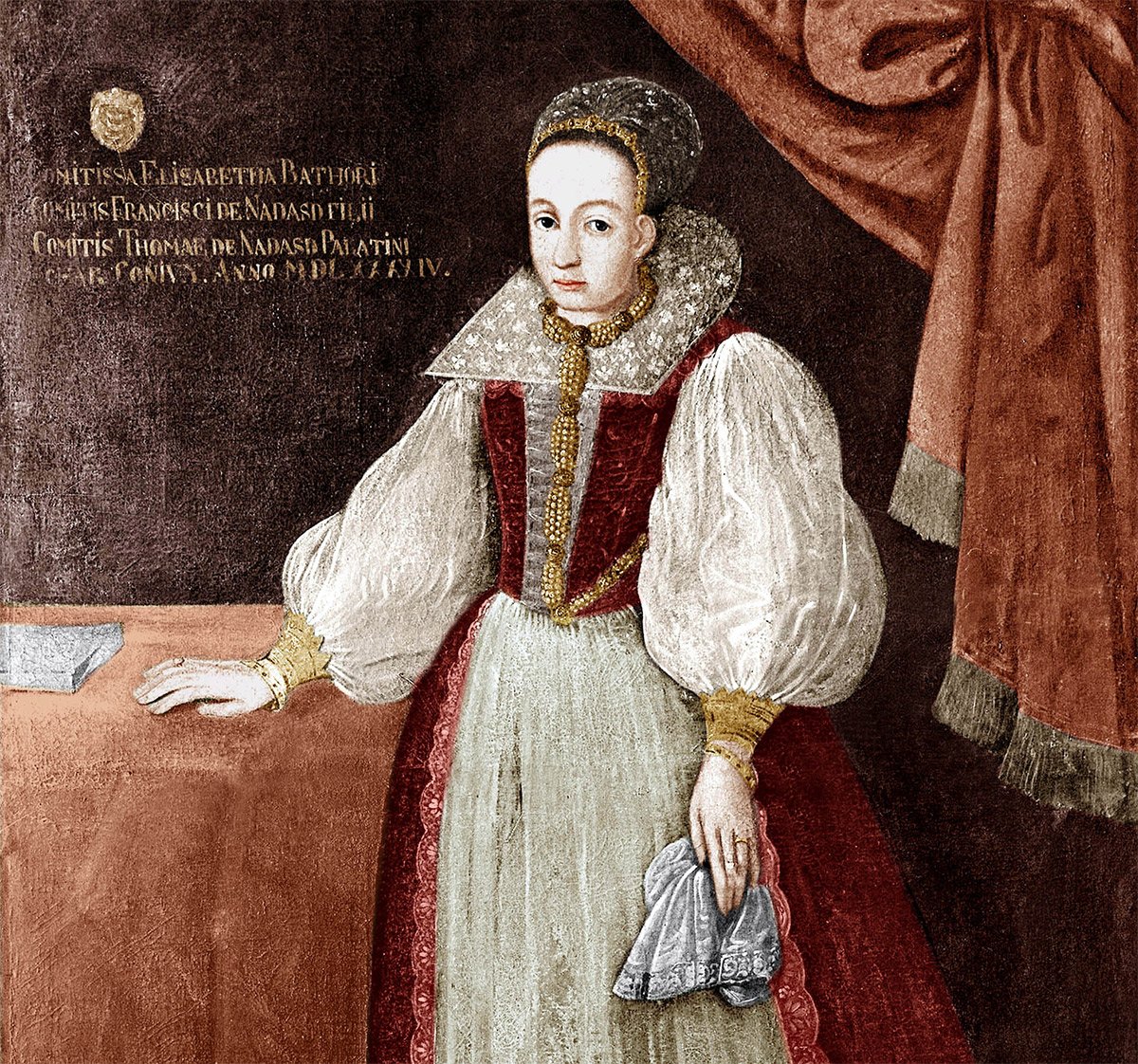Blood countess: Elizabeth Bathory, anonymous portrait, 17th century.
Countess Elizabeth Báthory de Ecsed, better known as Elizabeth Báthory, was a Hungarian noblewoman who would later be imprisoned after being convicted of multiple murders. Báthory was born in August 1560, when, in her early years, she spent her time at Ecsed Castle. During her childhood, she suffered from multiple ailments, such as seizures, violent mood swings, and constant migraines. Her seizures were believed to be caused by epilepsy, which at the time was diagnosed as “falling sickness." This sickness was treated by rubbing the blood of someone who wasn't affected on her lips. At an early age, she was exposed to violence such as mistreatment and beatings towards servants. Once Báthory reached the age of 13, she became engaged to 18-year-old Count Ferenc Nádasdy, whom she would later have children with.
Nádasdy Castle
After they became husband and wife, they moved to Nádasdy Castle, where her husband would educate her in the ways of torture. He would present gifts to Báthory in many ways, often in the form of instruments of torture or acts of torture against others. He once gifted her spiked gloves that could be used on servants who made mistakes. For her amusement, Nádasdy restrained a young woman, who was then covered in honey and left to be devoured by insects. Although Nádasdy wasn't the only influence in Báthory's life during this time, her Aunt Clara introduced her to adult group activities as well as people who were considered to be shady (witches and alchemists).
Čachtice Castle
Báthory's level of violence dramatically increased after she relocated to Čachtice Castle in the early 1600s, after her husband's death. She would often target women who were servants and peasants. Word of her violence spread into the nearby town, and due to fear, the villagers would hide their daughters from potentially becoming her next target. Her torture methods would include dismemberment, attacks of adult nature, needles, whips, and burning of the flesh. It is also believed that she would bathe in virginal blood to regain her youth, although some disagree as to whether or not this is factual. Báthory eventually came under investigation due to the torture of a young noblewoman. Unfortunately, the mistreatment of those who were considered lower class (peasants) was considered normal, and most would ignore their suffering. However, killing a noble, even if they weren't as high-class as Báthory, was frowned upon, and those who contributed to the death of anyone who was higher class were punished.
Investigation and Imprisonment
After many rumors of women going missing in 1610, the King of Hungary at the time, Matthias II, sent two notaries to go and collect evidence of Báthory's reported involvement in the murder of these women. After obtaining dozens of eyewitness accounts and evidence of torture being present on the deceased, Báthory was arrested and imprisoned in the very castle where these murders took place. However, due to the lack of documentation that showed Báthory committed these acts, she was imprisoned instead of handed a harsher punishment. She was free to roam the confines of her castle, despite being under house arrest for the remainder of her life. Her servants, however, were not so lucky, as they were convicted of the murders instead and executed after "confessing" to the acts after being tortured. It is believed her number of victims could have been as high as 600.
Death
Báthory eventually passed away in her sleep at the age of 54 in 1614. She was originally buried in the town cemetery, which caused an uproar among the villagers of the town due to her crimes. Her body was eventually moved to her home, Ecsed, where she was laid to rest in the Báthory family crypt. The location of her grave today is currently unknown.
Conspiracy
In later years, it was theorized that Countess Báthory was a victim of a conspiracy theory. Some theorized she was a victim of political rivalry as some would benefit from her downfall, and theorists claimed her to be a “defensive widow." Others believed she had committed the crimes, but theorized that the actual acts of torture were heavily embellished to again aid in her downfall. One of the biases of this theory is that the King of Hungary, Matthias II, owed a debt to Báthory. However, these claims are heavily distributed.
Written by Pressley Reeve
Cavendish, Richard . "Death of Countess Elizabeth BáThory." History Today, 8 Aug. 2014, www.historytoday.com/archive/months-past/death-countess-elizabeth-bathory. Accessed 3 Feb. 2024.
"Elizabeth BáThory." Wikipedia, en.wikipedia.org/wiki/Elizabeth_B%C3%A1thory. Accessed 3 Feb. 2024.
Kettler, Sara. "Elizabeth Bathory." Biography, 3 Oct. 2023, www.biography.com/crime/elizabeth-bathory#. Accessed 3 Feb. 2024.
O'Connell, Ronan. "The Bloody Legend of Hungary’s Serial Killer Countess." National Geographic, 21 Oct. 2022, www.nationalgeographic.com/history/article/the-bloody-legend-of-hungarys-serial-killer-countess. Accessed 3 Feb. 2024.

